#youtube
2016 Nissan Sentra Review - Nissan's Compact Goes Premium
Traditional car shoppers are moving away from small sedans and toward compact crossovers. That’s the conventional wisdom used to explain the slowing sales we see in some models. But could there be another reason? Could it simply be a lack of focus and attention to the compact segment?
There is one model that’s seen a meteoric rise in sales since 2013: the Sentra. Nissan’s complete overhaul three years ago and aggressive pricing doubled Sentra sales since then, moving it from a “top 15” player in sales to number five in 2015.
In an effort to maintain the trajectory, Nissan opted for a major refresh after just three years on sale. (Sounds like the Honda plan with the Civic, doesn’t it?) Perhaps the key to compact success is a combination of frequent updates and more gadgets for shoppers to choose from. That sums up the 2016 Sentra perfectly.
2016 Lexus IS 200t Review - Lexus Finally Goes Turbo
Lexus has tended to prefer conservative design in almost every aspect of product development. Words like reliable and dependable usually spring to mind before sporty or exciting.
Yet, the brand has been trying to change that over the last few years with love-it-or-hate-it designs; in particular, Lexus’ new “Predator mouth.” The changes aren’t simply skin deep. The current-generation IS sedan also stepped outside the luxury brand’s comfort zone with sharp handling and a focus on dynamics. Of course, this is Lexus we’re talking about, so this change in a more aggressive direction is happening at, you guessed it, a conservative pace.
Now in its third year of production, the third-generation IS isn’t getting a refresh like we’d typically see in from ze Germans. Instead, Lexus has decided to focus its attention under the hood with a new turbocharged four-cylinder engine and a de-tuned V-6 for mid-level shoppers.
Can a refreshed drivetrain help the IS stand out in a crowded segment? Let’s find out.
2016 Audi TT Roadster Review - Not Just a Pretty Face
Most luxury roadsters are related to a practical, rear-wheel-drive sports sedan, but Audi prefers to march to a different drummer.
Since its inception in 1998, the Audi TT has been based not on the A4, but on the Volkswagen Golf. The original TT was the product of Audi’s best and brightest and it not only blew minds at its debut for its design, it was a hoot to drive as well.
The second generation of the TT on the other hand, failed to impress. It’s not that it was a bad car, it just didn’t excite me like the first generation did. The handling was good, but BMW’s Z4 and Mercedes’ SLK were more fun. The exterior was bolder and meaner than the original, but the interior was too “VW Golf” for the price tag. Every time I sat in one I would say to myself, “Something is missing.”
As luck would have it, Audi’s engineers were also searching for that “something.” And they found it.
2016 BMW I8 Review - The 'Affordable' Plug-In Supercar
“Looks like sex, goes like stink” is the usual supercar mantra, but BMW’s guru was humming a different tune when penning the i8.
You see, the i8 isn’t just a sexy car with “butterfly doors.” It’s also a production prototype of sorts styled after BMW’s 2009 Vision EfficientDynamics concept.
Most supercars have exotic engines with high cylinder counts and drink premium gasoline at an alarming rate. BMW’s mission with the i8 was to make an efficient supercar and at the same time production-test technologies that will trickle down to its higher volume cars over time.
The i8’s efficiency is the key to understanding this sexy German. The i8 isn’t the best handling supercar, or even the best handling BMW. Neither is it the fastest BMW, the most luxurious BMW, or (oddly enough) the most efficient BMW. Instead, the i8 delivers M235i like lateral grip, M4 like acceleration, fuel economy that bests the 320i by a few miles per gallon and lines so sexy I got a thumbs up from a passing F430.
This isn’t your average sports car.
2016 Chevrolet Impala Review - Buick's Second Fiddle (Video)
The Impala exists in an odd segment of its own. The full-sized Chevy is one of the largest sedans on sale in America, yet its base engine is only a 2.5-liter four cylinder. Based on the pricing and feature options, the Impala is designed to be a semi-step above the Malibu, yet the number of true competitors the Impala has is extremely small. That’s because GM’s philosophy in the large sedan segment is different from the rest. Most of its competitors have two entries in this segment: one mass-market option and one luxury option. GM, however, slices its pie three ways with the Chevy Impala, Buick LaCrosse and Cadillac XTS.
That puts the Impala in the dubious position of the least expensive option in GM’s full-sized portfolio. It also means the Impala’s full-sized competition narrows to just the Taurus and the Charger. Why? Because the real competitor to the Chrysler 300, Hyundai Azera, Kia Cadenza, Acura RLX and most trims of the Toyota Avalon isn’t the Impala, but the Buick LaCrosse. Meanwhile, top-end trims of the RLX, Cadenza, Azera, Chrysler 300 and Lexus ES cross shop with the Cadillac.
Has GM sliced things just a little bit too fine with the Impala? Let’s find out.
2016 Kia Optima SXL Review - Short Road to the Top (Video)
It’s easy to see why some automakers resist putting premium features in mass market models. All you need to do is look at that luxury showroom to the right. In the quest to differentiate, say, the Ford Fusion from its Lincoln counterpart, or the Toyota Avalon from the Lexus ES, and so forth, manufacturers limit the options and luxuries available on the more pedestrian models.
On the surface, the Optima SXL’s mission could be confused with that of competitors from other non-luxury marques — Accord Touring and Fusion Titanium to name two — but Kia takes its top-trim game a couple steps further. You see, Kia is in a different position as the Optima has no luxury branded sistership and Kia has nothing to lose by creating an Optima trim that could arguably compete with the Acura TLX and Lincoln MKZ.
However, the Optima SXL’s existence does give rise to a very important question: Can a gussied-up family sedan be a value alternative to a near-luxury option, such as the TLX or MKZ? Or is this a case of “making a silk purse out of a sow’s ear?”
Let’s find out.
2016 Mazda MX-5 Miata Review - An Original Reborn (Video)
If there is one constant in the automotive world, it is that every redesigned vehicle gets bigger, more powerful, heavier and more complex. Bucking that trend is Mazda’s latest MX-5, one of the smallest and lightest cars sold in the United States.
Since the launch of the Miata in 1989, Mazda’s tiny roadster has been a beacon of light to those who prefer a “pure” driving experience. The MX-5’s core mission of being an affordable, lightweight, two-seat convertible has hardly changed. More impressive: The 2016 MX-5 is about the same size as the original Miata, and the new roadster is only 182 pounds heavier despite producing 50-percent more power and being 30-percent more fuel efficient. The price tag has also been kept in check. The 2016 model still costs about the same as a mid-sized sedan.
Making the MX-5 even more special is that it stands alone in America. Sure, Alfa is now selling their sexy and expensive 4C here, BMW still has a Z4 roadster, and Scion and Subaru are selling their two-door coupé — but none of these are like the MX-5 and that’s a good thing for Mazda.
2016 Toyota Tacoma Limited Review - Off-road Taco Truck [Video]
Toyota’s small trucks have long been associated with bulletproof reliability ( and occasionally militant militias). Despite the Tacoma splitting from the legendary Toyota Hilux bloodline in 1995, the Taco (as some fans refer to their trucks) has continued Toyota’s rugged and reliable image. A big factor in the Tacoma’s long-term reliability is the Toyota’s philosophy to change: it should happen slowly and only when necessary.
Although the 2016 Tacoma is dubbed an “all-new third generation,” just like we see in the Camry, large portions of the design are carried over from last year’s model. This is excellent news for some, but may come as a disappointment for others. The changes are enough to keep brand loyalists happy, radical enough to be called a re-design, but sedate enough that folks eyeing a GMC Canyon may not be swayed by the lure of Toyota’s legendary reliability.
In a nutshell, Toyota swapped in a set of tried-and-true transmissions, fitted a Lexus V-6 under the hood, tweaked the frame with stronger steel and covered the truck in new sheetmetal. On the inside, we get a new dashboard, infotainment systems from the Toyota Highlander and a steering wheel from the larger Toyota Tundra. If you’re a Taco man, that’s all you need to know before you run out and buy one. For the rest of us, click past the jump.
2016 Audi S7 Review – The Coupe With Too Many Doors [Video]
Coupé-like styling is one of the biggest buzzwords at new car launch parties. Although this is more of a modern phenomenon, the root of the seemingly contradictory four-door coupé is older than you might think.
In 1962, Rover dropped the rear roofline on its P5 sedan and dared to call it a four-door coupé. In 2004, Mercedes picked up on this idea with the CLS-class Coupe. It was only a matter of time before Audi and BMW joined the party with the A7 and 6-Series Gran Coupé.
Now, many of you may say we already have a name for the four-door coupé. It’s a sedan. I agree with you. Audi isn’t entirely convinced by the “coupé” designation either, and they only dare mention it twice in the 62-page brochure. This means the S7 is a $12,000 styling exercise atop a tasty and more practical S6.
2016 Smart Fortwo Review - Honey, I Shrunk The Car [Video]
America loves big cars, big trucks and fat crossovers. If you doubt me, all you need to do is look at 2015’s top sellers. The top five vehicles account for 13 percent of all vehicles sold in the USA this year, and the smallest of the five is the Toyota Camry. Not so small. Check the top 20 list, and the smallest entry is the Corolla which has grown so large we would have called it “midsized” in the ’80s.
Today, we’re looking at a very different kind of car: the 2016 smart fortwo (yes, that’s all lower case for some reason), a car that is six feet shorter than the Corolla.
2008 was Smart’s best year in the USA with some 24,000 cheeky micro cars sold. Since then, sales haven’t been swift. Yearly sales numbers in the USA bounce between 5,000 and 14,000. Canadians, however, seem to love them. Sales volumes in the Great White North hover around half the US volume. Not impressed? The entire Canadian market’s sales numbers are “smart-sized” compared to the United States. Heck, Smart outsells Maserati in Canada. Could it be that, like nationalized healthcare, the Canadians are up to something good? Or, just like healthcare, is this a good idea somewhere else, just not in the USA?
2016 Honda Accord Sedan Review - Quintessential Family Hauler [Video]
Accord sales are down 11 percent versus last year. Surprised? So was I. Looking at the numbers, the winner is even more surprising: the Chrysler 200.
Tim’s numbers at GoodCarBadCar tell an interesting tale. Overall segment sales are down slightly with most models seeing only modest sales differences. Then we have the Accord and 200. Honda sold 35,000 fewer sedans so far this year than last while Chrysler sold 72,000 more.
While the 200 is far from a sales segment leader, the increase is impressive nonetheless, and begs the question: Are Honda’s traditional buyers opting for an American alternative? It’s not possible to answer that question simply by the sales numbers, but it is an interesting question.
Despite Americans getting bigger in every generation, the family sedan’s focus on the back seat is in decline. This is partly due to the crossover revolution and partly because cars like the Chrysler 200, Ford Fusion, Kia Optima and even the Subaru Legacy are cutting rear headroom in an effort to look sexier from the 3/4 shot.
Fear not, families of four: Honda continues to carry the torch for pragmatic sedan shoppers with the refreshed 2016 Accord.
2016 Volvo XC90 T6 AWD Review - Sweden's New King (Video)
Many of you have asked why we bother to review a car we’ve already reviewed based on a few hours at a launch event. The all-new 2016 Volvo XC90 is a textbook example of why more time with a car allows for a more complete review.
At launch events, you have no time to perform acceleration or brake tests of a vehicle (and, of course, you aren’t testing the car on the same circuit that the rest of the cars have been tested upon) and you have no ability to drive the competition back-to-back to get a sense of comparison. There is a reason that first drive reviews tend to be fact based: it’s hard to review a car in a vacuum.
So why is the XC90 a textbook example? Because of my own biases. Biases are interesting things. They can blind you to a car’s faults, or they can lead you to overcompensate and find fault.
After digesting my time with the XC90, I started falling into the latter camp. Edmunds 0-60 tested the XC90 and found it slower than expected. I started wondering if I had been wearing rose-colored glasses and asked myself: “Was it really that good?” Therefore, I had to get my hand on one again so I could run it through our battery of tests and drive it on my own for a week to find the answer.
The answer: It is better.
2016 Audi A6 3.0T Review (With Video)
Audi is a brand associated with all-wheel drive, well-fitted interiors and design evolution that requires you to park a new model next to an old one to tell what has been changed. The 2016 A6 doesn’t diverge much from this formula despite being a thorough refresh of the outgoing A6.
This Audi plays in the crowded midsize luxury pool with competition coming from every angle. The big boys are, of course, the BMW 5-Series and Mercedes-Benz E-Class, but 2016 also brings an all-new and all-aluminum Jaguar XF. We also have Cadillac’s latest CTS, a Maserati Ghibli for those that want something less reliable than a Jag, the Lexus GS and Infiniti Q70 from the land of the rising sun and the Koreans have the Genesis — and that’s before we start including the more distant competition from Volvo, Acura, Lincoln, etc. The last A6 was a midsized luxury unicorn, because not even Nissan thought they could sell a front-wheel drive luxury car in America with a CVT. As it turns out, not even Audi could defend the CVT in a luxury entry, so 2016 sees the end of Audi’s dalliance with the cogless tranny. Fear not folks, the A6 is still the odd German out since the base model is still front-wheel drive.
2016 Jaguar F-Type S Review - Row Your Own Kitty [w/ Video]
2016 Jaguar F-Type S 6-Speed Manual
3.0-liter AJ126 DOHC V-6, supercharged (380 horsepower @ 6,500 rpm; 339 lbs-ft @ 3,500-5,000 rpm)
6-speed ZF Manual
16 city / 24 highway / 19 combined (EPA Rating, MPG)
20.1 (Observed, MPG)
Base Price:
$65,995*
As Tested:
$89,250*
* Prices include $995 destination charge.
Jaguar has long occupied an interesting niche in the luxury segment due to not being a full-line brand. With a few exceptions, the English brand’s primary targets have been the E-Class/5-Series, the S-Class/7-Series and whatever high-end coupe and convertible the Germans are selling at the moment. That is changing now that Jaguar has decided to expand their portfolio with the 3-Series fighting XE and the brand’s first crossover, the F-Pace. (Yes, I know that Jaguar has had SUVs for decades called Land Rovers, but I digress.)
Part of Jaguar’s renaissance has been product based, and part has been returning to Jaguar’s sporting roots. While many folks still think of Jaguar as the brand that makes the “English Town Car” (yes, that is a Lincoln reference) like the 2005 Super V8 that sits in my driveway, my “stuffily” styled Jag was actually the start of the modern Jaguar we’re seeing today. You see, the X350 generation XJ was all-aluminium and as a result it could actually be described as “light and nimble” compared to an S-Class of the era. The F-Type harkens back to the old E-Type Jaguars of yesteryear, but this time Jag skipped ye olde styling and created one of the sexiest looking Jags ever. For 2016, Jaguar has re-tweaked the coupé and convertible adding AWD and a manual transmission.
You heard that right manual lovers: this kitty has a stick.
2015 Ford F-350 Super Duty Review - Hauling Above The Limit [w/ Video]
2015 Ford F-350 King Ranch 4×4
6.7-liter OHV V-8, turbodiesel (440 horsepower @ 2,800 rpm; 860 lbs-ft @ 1,600 rpm)
6-speed 6R140 automatic
Not tested under EPA regulations*
14.1 (Observed, MPG)
Tested Options: King Ranch trim, Super Crew cab, 4×4, 6.7-liter turbodiesel engine, 3.31 locking rear axle, Ruby Red paint, 5th wheel prep, spray-in bedliner, heated seats, upfitter switches
Base Price (F-350 XL Regular Cab 4×2 Flex-Fuel V-8):
$33,900**
As Tested:
$65,590**
* Heavy-duty pickups are exempt from EPA fuel economy ratings.
** Prices include $1,195 destination charge.
There was a time when a 1/2-ton pickup could haul around 1,000 pounds of payload and a 1-ton truck was good for around 2,000 pounds. Twenty years ago a good tow rating for a 1/2 ton truck was 7,500 pounds and 1-ton trucks were used by ranchers for hauling 14,000 pound cattle trailers around. Today things are different.
Now we have a Ford F-150 that can tow over 12,000 pounds and haul 3,300 pounds in the bed without batting an eye. In this world, we have 3/4- and 1-ton trucks boasting towing abilities that would have required a Class 5 medium-duty truck in the 1990s. It’s in this world that the F-350, F-450 and Ram 3500 now exist.
These trucks have pushed the envelope, boasting towing capabilities that 99 percent of pickup truck shoppers can’t even legally test. With massive turbodiesel torque figures, Ford and Chrysler’s latest trucks can tow 21,000 pounds more than my plain-old California Class C license allows. With the 2017 Ford Super Duty on the horizon sporting more aluminum than an Alcoa factory and Chrysler nearing the sale of their re-tweaked Cummins engine and its 900 lb-ft of torque, let’s deep-dive into the Super Duty you can buy now.




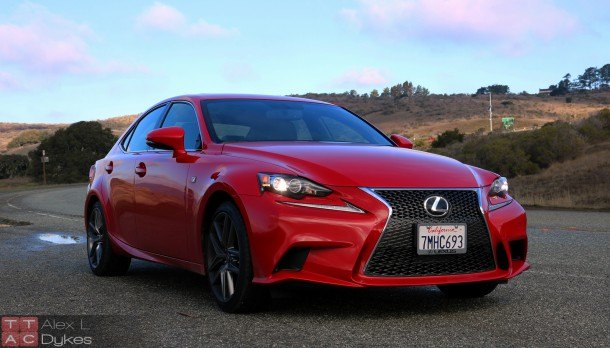
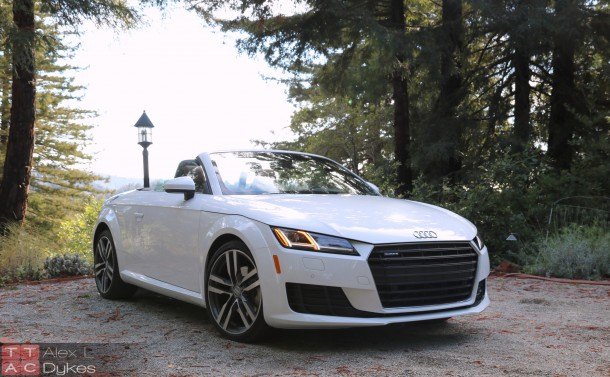
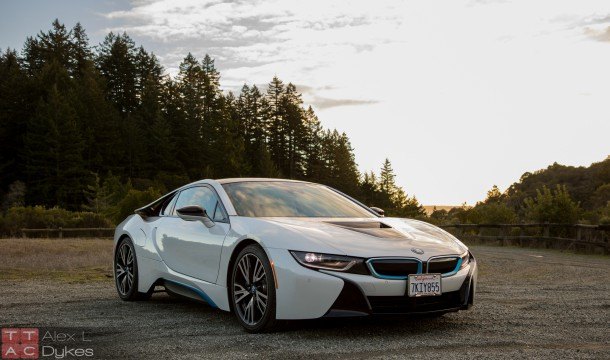

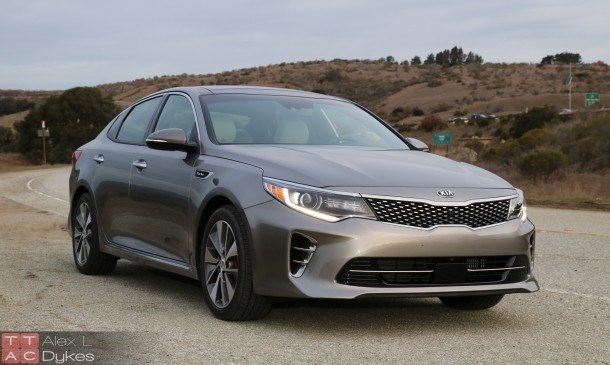
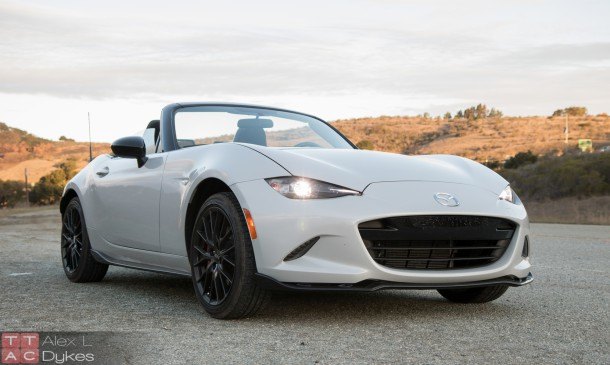
![2016 Toyota Tacoma Limited Review - Off-road Taco Truck [Video]](https://cdn-fastly.thetruthaboutcars.com/media/2022/07/19/9235237/2016-toyota-tacoma-limited-review-off-road-taco-truck-video.jpg?size=720x845&nocrop=1)
![2016 Audi S7 Review – The Coupe With Too Many Doors [Video]](https://cdn-fastly.thetruthaboutcars.com/media/2022/07/19/9236218/2016-audi-s7-review-the-coupe-with-too-many-doors-video.jpg?size=720x845&nocrop=1)
![2016 Smart Fortwo Review - Honey, I Shrunk The Car [Video]](https://cdn-fastly.thetruthaboutcars.com/media/2022/07/19/9237273/2016-smart-fortwo-review-honey-i-shrunk-the-car-video.jpg?size=720x845&nocrop=1)
![2016 Honda Accord Sedan Review - Quintessential Family Hauler [Video]](https://cdn-fastly.thetruthaboutcars.com/media/2022/07/19/9237516/2016-honda-accord-sedan-review-quintessential-family-hauler-video.jpg?size=720x845&nocrop=1)
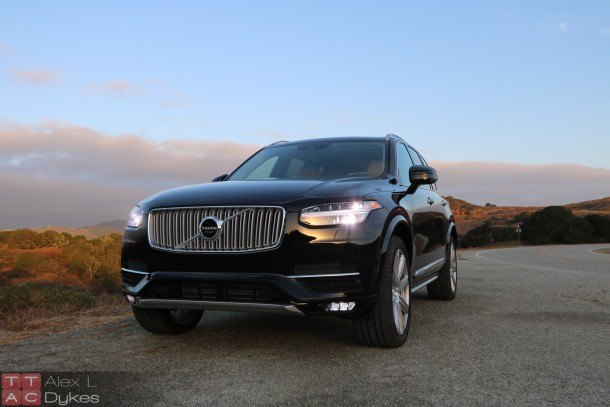

![2016 Jaguar F-Type S Review - Row Your Own Kitty [w/ Video]](https://cdn-fastly.thetruthaboutcars.com/media/2022/07/19/9242323/2016-jaguar-f-type-s-review-row-your-own-kitty-w-video.jpg?size=720x845&nocrop=1)
![2015 Ford F-350 Super Duty Review - Hauling Above The Limit [w/ Video]](https://cdn-fastly.thetruthaboutcars.com/media/2022/07/19/9243653/2015-ford-f-350-super-duty-review-hauling-above-the-limit-w-video.jpg?size=720x845&nocrop=1)












Recent Comments